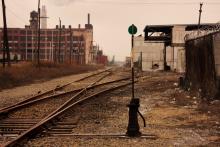Marvel at the beautiful stories to tell in U.S. cities
murals

UNTIL RECENTLY, a company in New York City offered “a ride through a real New York City ‘ghetto’”—a $45 bus tour of the Bronx, reportedly patronized mainly by European and Australian tourists. One news report described the tour guide sharing lurid stories of crime and arson from the ’70s and ’80s, making insensitive comments about everything from local architectural landmarks to people waiting in line at a food pantry, and warning about the “pickpockets” in wait in a certain park. After an outcry from residents and officials, angry that the place they call home would be reduced to out-of-touch stereotypes, the tour company shut down in May.
That someone would even think of fleecing misguided tourists this way hints at the complicated, sometimes contradictory, role that cities play in our culture: In our collective imagination they represent both civilization’s pinnacle (arts, style, technology, intellectualism, innovation, industry, finance) and depravity’s depths (crime, corruption, exploitation, decadence, filth). For much of the 20th century, many people of means fled cities for the pastoral promise of the suburbs, while many a farm girl or boy dreamed of escaping to a city and tasting the bustle and thrill: “Until I saw your city lights, honey I was blind.”
And yet cities are not only symbols, but real and intricate places. Whether booming or busting, they shape and are shaped by the people in them. Both the built structures and the people of a city have stories to tell. But a fleeting tour-bus view with distorted narration can lead us down an alley with no exit.
Here are some different takes on the bright lights of the big city.

THOSE OF US who are passionate about prison reform could talk at length about the injustices of the penal system, but prison activists and concerned citizens sometimes gloss over the internal conflicts of prisoners in their daily lives as well as the pain and fears of crime victims in local communities. The documentary Concrete, Steel, and Paint raises some essential questions about hope, forgiveness, and reconciliation through the moving story of unlikely partners—those incarcerated for committing violent crimes and those affected by violent crimes—who come together to create a mural in their community.
The film begins at Graterford Prison near Philadelphia, a maximum-security institution where men are serving long sentences for violent crimes, including homicide. The men interviewed for the film seem thirsty for opportunities for healing. One of the first prisoners we meet, Tom, says: “When you do wrong that you can’t correct, it’s horrible.” Another inmate, Zafir, tells the camera: “I don’t want my legacy to be that I was a murderer.”
The energy for a mural project came from Jane Golden, the executive director of the Philadelphia Mural Arts Program, who believes in the power of art, and murals in particular, “to shift the consciousness of a community.” Golden began working with prisoners in Graterford in the early 2000s. The men in her workshops eventually came up with the idea to reach out to the community. “I thought it was an interesting idea,” Golden says, “but I told them the only way this can possibly work is if we can get the community involved.”
After a significant amount of pushback from community members, Golden suggests making two separate mural walls to convey the different journeys of offenders and victims. “It’s healing for me to tell my story,” says the mother of a homicide victim. “Maybe it will be helpful for them to tell their story.” The film teaches viewers that there are points of similarity in these stories—hurt, loss, anger, regret—and there is a shared desire for healing and for change, but the journeys are still different and portraying them in shared space could minimize the ability to convey truth for each group. Can offenders and victims of crime ever share a platform to express pain, to ask for healing?